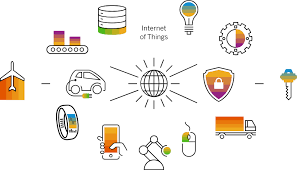Implementing edge computing in an IoT system involves several steps and considerations. Here’s a high-level overview of the process:
- Identify Use Cases: Determine the specific use cases or scenarios in your IoT system where edge computing can bring significant benefits. Consider factors such as latency requirements, bandwidth constraints, data privacy concerns, and the need for real-time or near-real-time decision-making.
- Define Data Processing Requirements: Analyze the types of data generated by your IoT devices and identify the processing tasks that can be performed at the edge. Determine which data should be processed locally, what insights or actions need to be derived, and which data can be sent to the cloud for further analysis.
- Select Edge Devices: Choose edge devices that are suitable for your use cases and can handle the required data processing tasks. Consider factors such as processing power, memory, storage, connectivity options, and compatibility with your IoT devices and protocols.
- Develop Edge Analytics: Design and implement the necessary algorithms, models, and analytics capabilities for processing and analyzing data at the edge. This may involve developing machine learning models, rule-based systems, or custom analytics pipelines depending on your specific requirements.
- Data Filtering and Preprocessing: Determine the data filtering and preprocessing steps that can be performed at the edge to reduce the amount of data transmitted to the cloud. This can include filtering out irrelevant or redundant data, aggregating sensor readings, compressing data, or performing basic data transformations.
- Implement Local Decision-Making: Define the decision-making logic that can be executed at the edge devices based on the analyzed data. This can involve setting up decision rules, thresholds, or triggers to enable autonomous local actions without relying on cloud connectivity.
- Secure Communication: Implement secure communication protocols and encryption mechanisms to protect data transmitted between edge devices and cloud servers. Ensure that data integrity and confidentiality are maintained throughout the communication process.
- Integration with Cloud Services: Establish integration between your edge devices and cloud infrastructure. Determine which data or insights need to be transmitted to the cloud for further analysis, long-term storage, or cross-device coordination. Integrate edge computing capabilities with cloud-based services to enable seamless end-to-end functionality.
- Testing and Optimization: Test your edge computing implementation under realistic conditions to validate its performance, scalability, and reliability. Optimize your edge analytics algorithms, data preprocessing, and decision-making logic based on feedback and performance metrics.
- Monitoring and Management: Set up monitoring and management systems to track the performance, health, and status of edge devices. Implement mechanisms for remote management, software updates, and configuration changes to ensure the smooth operation of your edge computing infrastructure.
- Assess your IoT Application: Evaluate your IoT application to determine the need for edge computing. Consider factors such as real-time processing requirements, latency sensitivity, data privacy concerns, and bandwidth limitations. Edge computing is most beneficial when quick response times, reduced data transmission, and localized analytics are essential for your application.
- Identify Edge Devices: Identify the edge devices in your IoT system. These can be IoT sensors, gateways, or edge servers located closer to the data source. Assess their computational capabilities, storage capacity, and networking capabilities to ensure they can handle the required processing and analysis tasks.
- Define Edge Analytics: Determine the specific analytics or processing tasks that will be performed at the edge. This may include data filtering, aggregating, preprocessing, running machine learning models, or making real-time decisions. Define the algorithms, models, or rules that need to be implemented locally on the edge devices.
- Select Edge Computing Software/Firmware: Choose the appropriate software or firmware that will enable edge computing capabilities on your edge devices. This can involve using edge computing frameworks, development tools, or even custom software development. Consider factors such as compatibility with your hardware, support for the desired analytics tasks, and ease of development and deployment.
- Develop and Deploy Edge Software/Firmware: Develop and implement the necessary edge computing software or firmware for your IoT devices. This may involve writing code to perform data processing, analytics, and decision-making tasks. Ensure that the software/firmware is properly tested for reliability, efficiency, and compatibility with the IoT devices.
- Configure Data Routing: Configure your IoT system to route relevant data to the edge devices for local processing. This may include setting up data streams, protocols, and communication interfaces between the IoT devices and the edge devices. Implement data filtering and aggregation mechanisms if needed to reduce the amount of data transmitted.
- Monitor and Manage Edge Devices: Deploy appropriate monitoring and management tools to oversee the health and performance of your edge devices. This can involve implementing remote management capabilities, monitoring resource utilization, and ensuring secure communication and data integrity.
- Continuous Improvement: Regularly evaluate the performance of your edge computing implementation and make necessary improvements. Identify potential bottlenecks, optimize algorithms or models, and refine the deployment configuration based on real-world data and usage patterns.
Remember that the specific implementation details can vary depending on the IoT system, hardware, edge devices, and software frameworks you are using. It’s important to adapt the above steps to your specific requirements and leverage appropriate tools and technologies for successful implementation of edge computing in your IoT system.
SHARE
